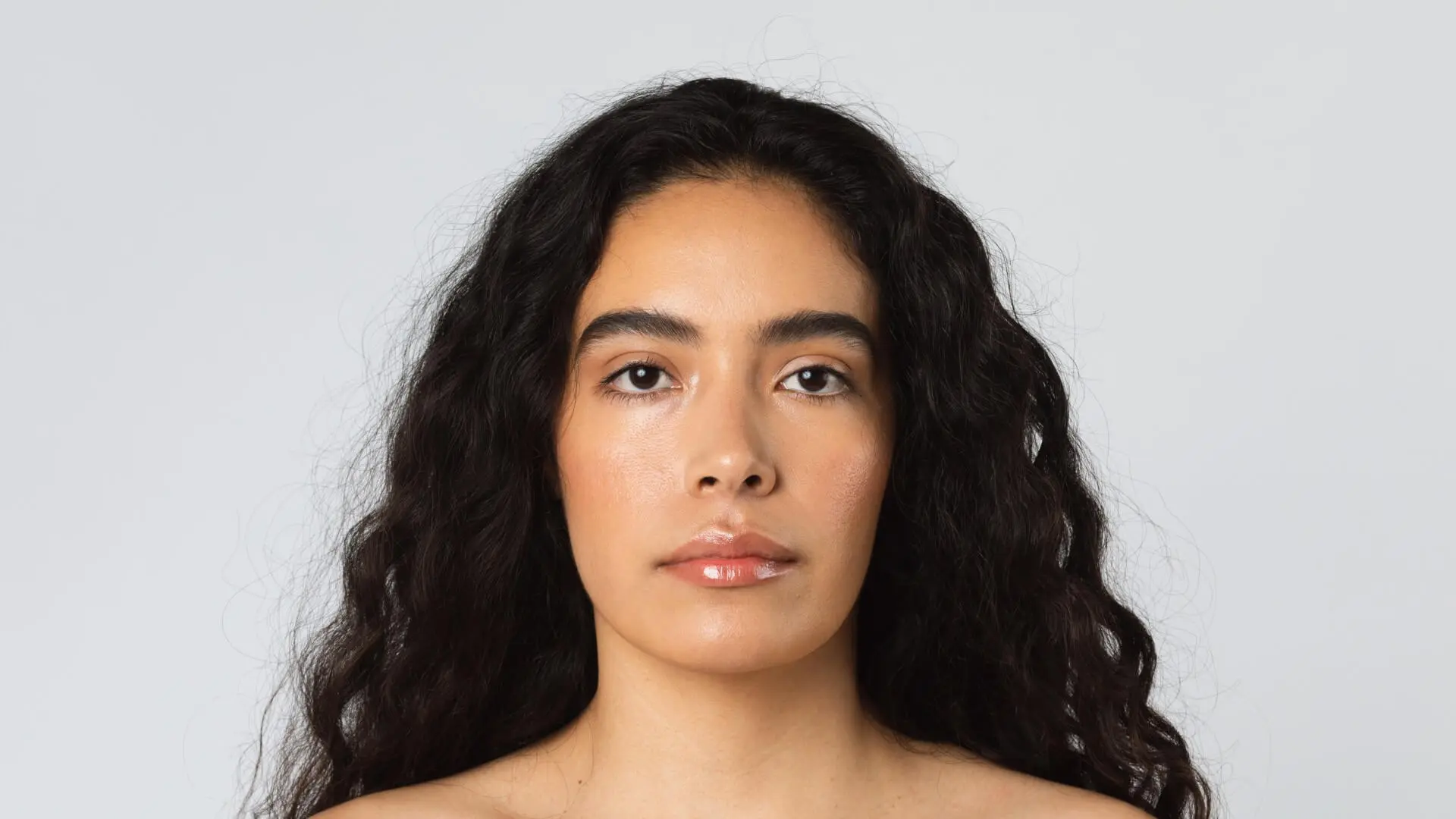Giving birth or experiencing significant change of weight can expand and separate the abdominal (stomach) muscles. This often results in a persistent bloated appearance in the belly that many patients hate to see.
Don’t be upset if, no matter how hard you try to beat your stomach into shape with extreme diets and workouts, it still refuses to flatten out. Because even in the absence of belly fat, the looseness of the abdominal wall can create saggy skin in the related area.
Feeling disconnected from your body after childbirth or weight loss is more common than people think. Many patients share that they avoid mirrors, feel embarrassed during hangouts, or struggle with confidence due to their belly’s appearance. A tummy tuck can help restore not just your body, but also your sense of self and identity.
Dr. Cengizhan Ekizceli performs abdominoplasty, also known as Tummy Tuck, as a sophisticated surgical procedure designed to address this frustrating issue. The surgery not only strengthens the abdominal muscles but also removes extra skin and fat tissue from the lower and upper belly region.
The goal in the end is to effectively restore firmness to the abdominal wall. This transformative procedure can help patients reclaim a toned and contoured midsection, enhancing both their looks & confidence.
Stages of the Surgery
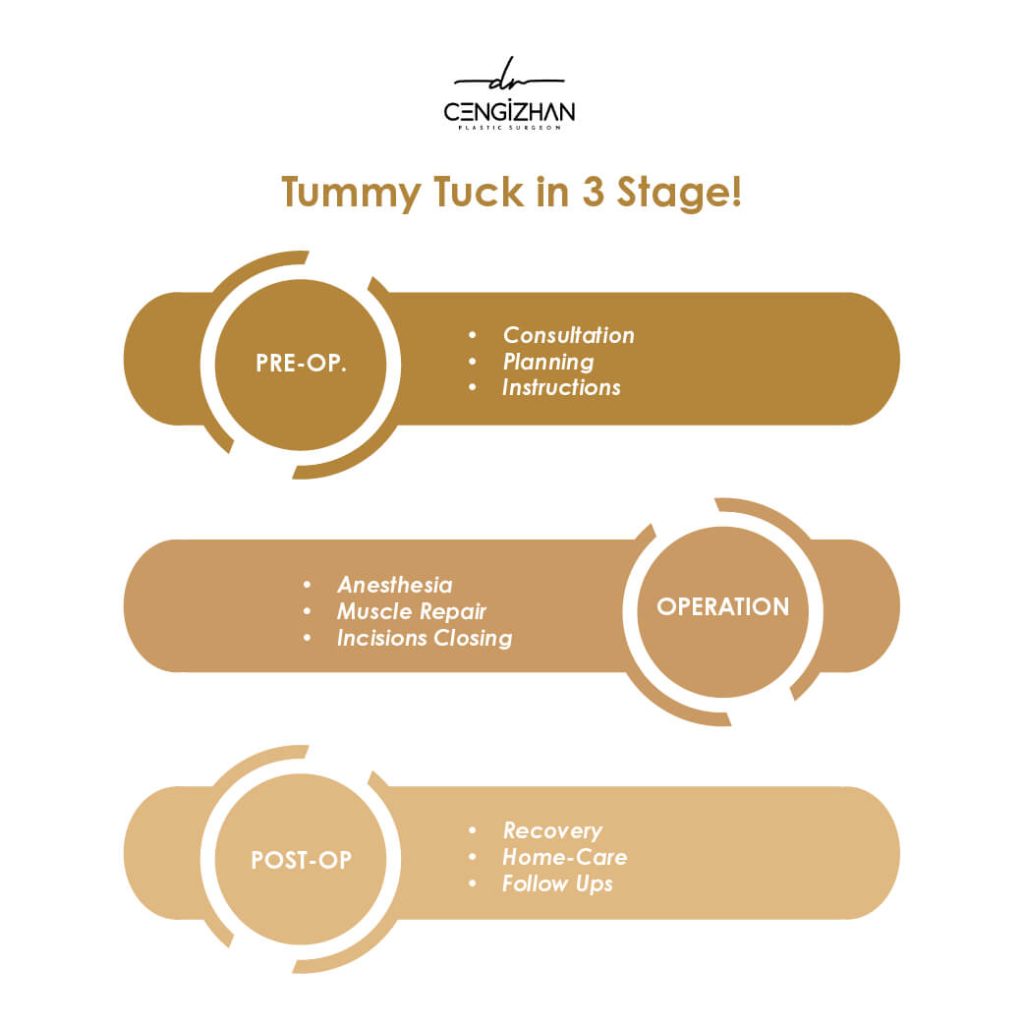
Pre-Operation
-
- Consultation & Planning:
Your journey begins with a thorough consultation with a certified plastic surgeon. During this session, your doctor will evaluate your medical history, discuss your aesthetic goals, and conduct a physical examination. This is the time to ask questions and express any concerns. The surgeon will explain the different types of tummy tuck procedures (see below) and recommend the best option for you!
Get an online free consultation from us in advance!
Click here to start your journey! 🤩
-
- How You Will Prepare Yourself to the Surgery:
In the weeks leading up to your tummy tuck, you will be advised to…
-
- Stop smoking if you are a smoker. Smoking can impede recovery and increase the risk of complications.
-
- Avoid certain medications. Blood-thinning medications and supplements like aspirin, anti-inflammatory drugs, and herbal supplements should not be taken.
-
- Maintain a healthy diet. Eating a balanced diet rich in vitamins and proteins can enhance your body’s healing abilities.
-
- Arrange for assistance. Plan for someone to drive you home after the surgery and help you during the initial recovery period.
-
- How Your Doctor Will Instruct You:
Your surgeon will provide specific instructions to follow the night before and the day of the surgery. This may include fasting after midnight and avoiding the use of lotions or creams on the abdominal area.
During the Operation
-
- Anesthesia:
Before it all begins, you will be given anesthesia for your comfort. This may be general anesthesia or intravenous sedation, whichever your doctor finds suitable for your individual condition.
-
- Incision and Muscle Repair:
The surgeon will make a horizontal incision between the pubic hairline and the belly button. The length and shape of the incision depend on the amount of excess skin. The underlying weakened abdominal muscles are then repaired and sutured.
-
- Removing Saggings and Fat:
The surgeon will remove excess skin and fat through the incision. Liposuction may also be used to enhance the contours.
Once the excess tissue is removed, the remaining skin is pulled down and sutured together. A new opening for the belly button is created, and it is then stitched in place.
-
- Closing the Incisions:
Finally, the incisions are closed with sutures. Drains are placed under the skin to remove any excess fluid or blood.
Post-Operation
-
- Recovery Begins:
After your tummy tuck surgery, you can expect swelling, bruising, and discomfort. Prescribed pain medication & health-care professionals designated to care for your needs will help manage any discomfort.
-
- Home-Care Instructions:
You’ll receive instructions on how to get dressed, put on the compression garment, care for your drains, and take your prescribed medications.
-
- Follow-Up Appointments:
Make sure to attend all scheduled check-ups for your doctor to monitor your healing progress and to address any possible concerns.
-
- Gradual Return to Activities:
Avoid strenuous activities for at least six weeks. Most patients can return to work within two weeks, depending on the job.
-
- Long-Term Care:
Maintain a stable weight, follow scar care recommendations, and prioritize your emotional well-being! ☀️
Types of Tummy Tuck
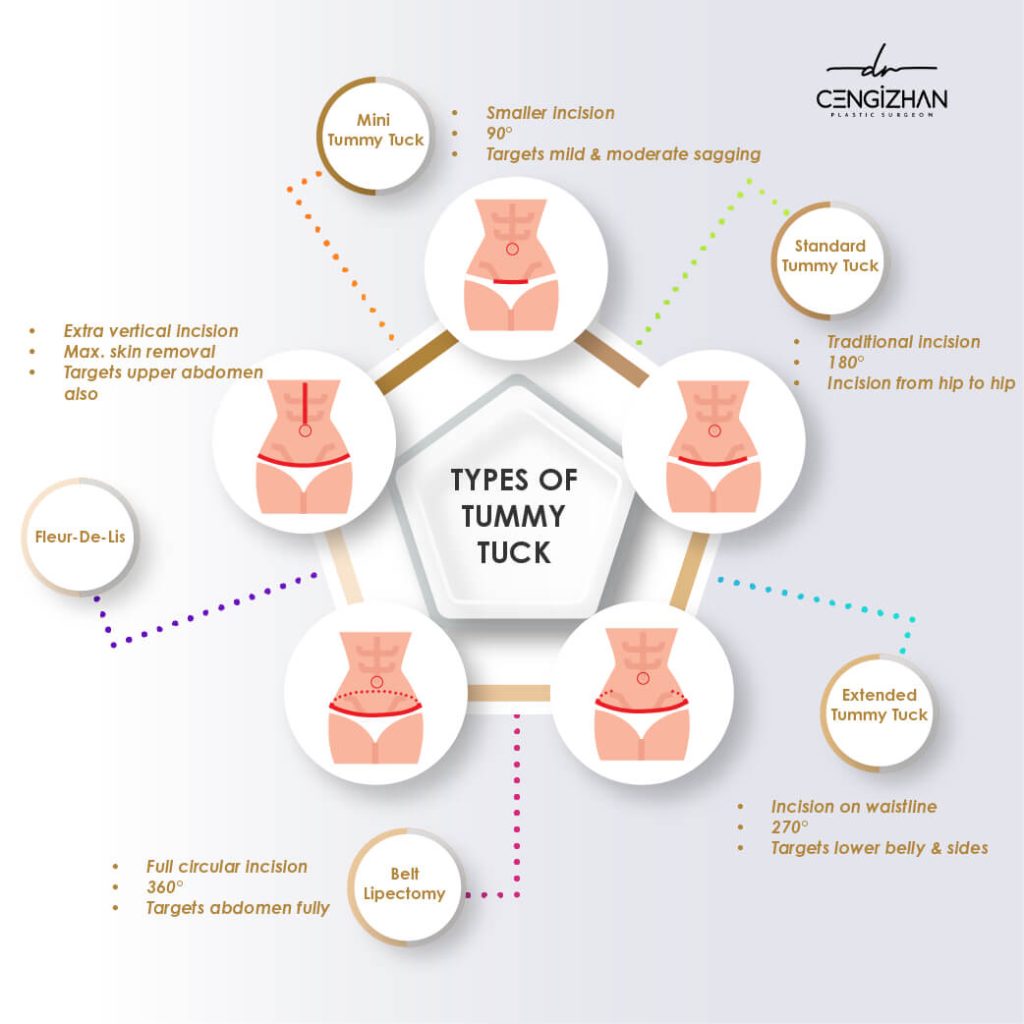
-
-
Mini Tummy Tuck (90 Tummy Tuck)
-
This procedure, also called partial tummy tuck, targets only the lower abdomen below the belly button. It is ideal for patients with mild to moderate excess skin and fat in the stomach area.
The incision is smaller and usually limited to the bikini line, resulting in less scarring. The belly button usually remains untouched or may be slightly repositioned.
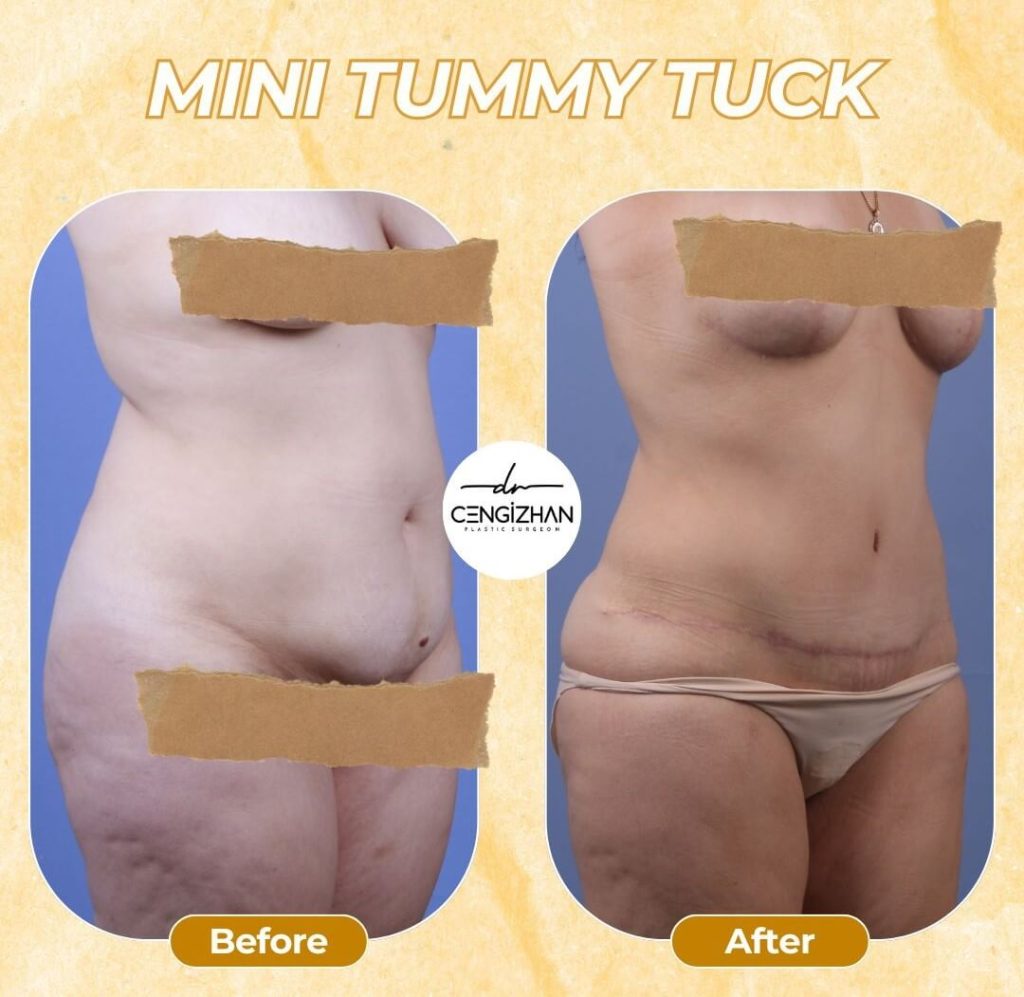
Example of a before & after testimonial of one of Dr. Cengizhan’s patients.
-
-
Standard Tummy Tuck (180 Tummy Tuck)
-
Also known as full abdominoplasty or traditional tummy tuck, this procedure addresses excess skin and fat in the entire front of the abdominal area. The incision is made horizontally from hip to hip, allowing the surgeon to remove excess tissue, tighten abdominal muscles, and reposition the belly button for a more rejuvenated appearance.
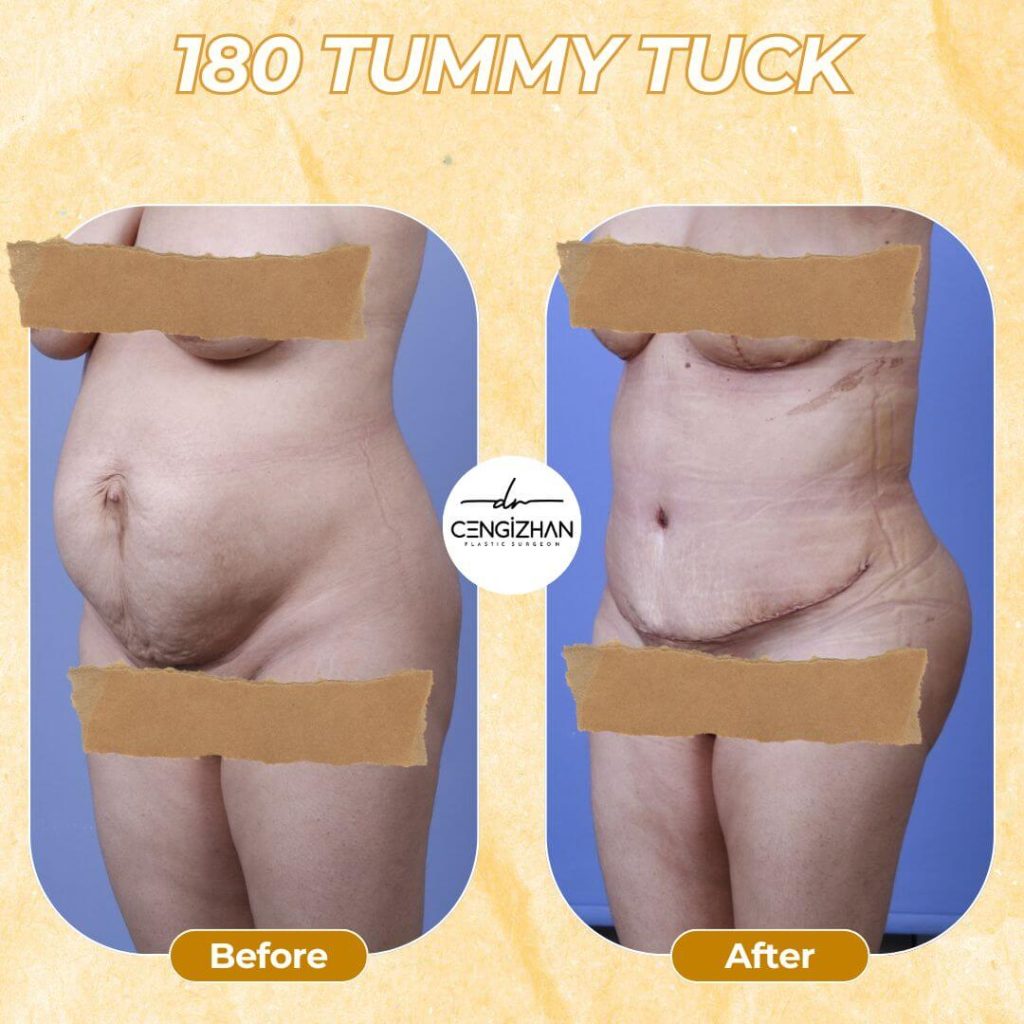
Example of a before & after testimonial of one of Dr. Cengizhan’s patients.
-
-
Extended Tummy Tuck (270 Tummy Tuck)
-
This procedure targets excess skin and fat not only in the lower abdomen but also extends to the sides. Lengthening the incision made in a standard tummy tuck addresses excess skin and fat in the lateral areas, resulting in a more comprehensive contouring of the waistline.
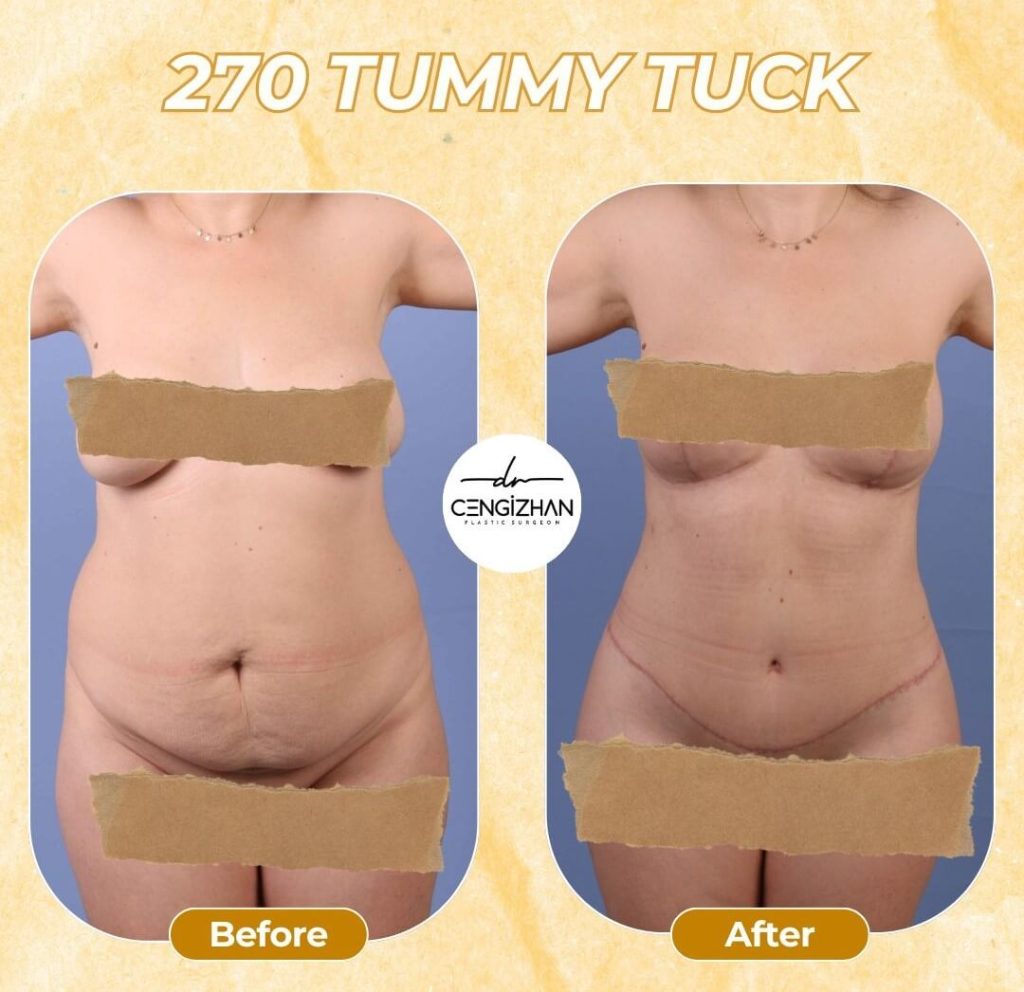
Example of a before & after testimonial of one of Dr. Cengizhan’s patients.
-
-
Belt Lipectomy (360 Tummy Tuck)
-
This procedure, also described as circumferential tummy tuck, addresses excess skin and fat in the entire abdomen, including the front, sides, and back.
The incision extends all the way around the waist, allowing the surgeon to remove excess tissue and contour the entire midsection. It is ideal for patients who have experienced significant weight loss or have excess skin and fat in multiple areas of the abdomen.
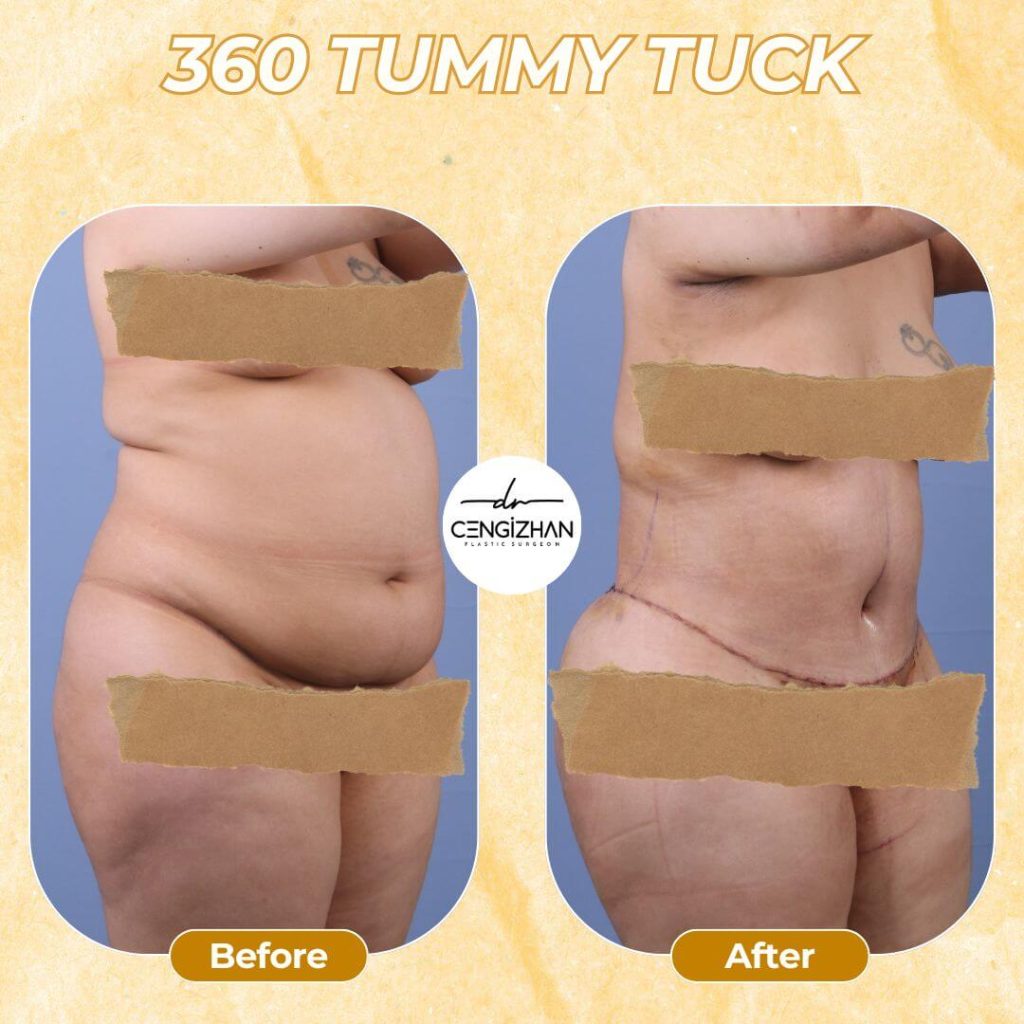
Example of a before & after testimonial of one of Dr. Cengizhan’s patients.
-
-
Fleur-de-Lis Tummy Tuck (FDL Abdominoplasty)
-
This procedure is suitable for patients with significant excess skin and fat in their stomach, often following massive weight loss or multiple pregnancies. It involves a vertical incision in addition to the horizontal one to address excess tissue both vertically and horizontally. This allows for maximal tissue removal and reshaping of the abdomen, resulting in a bolder transformation.
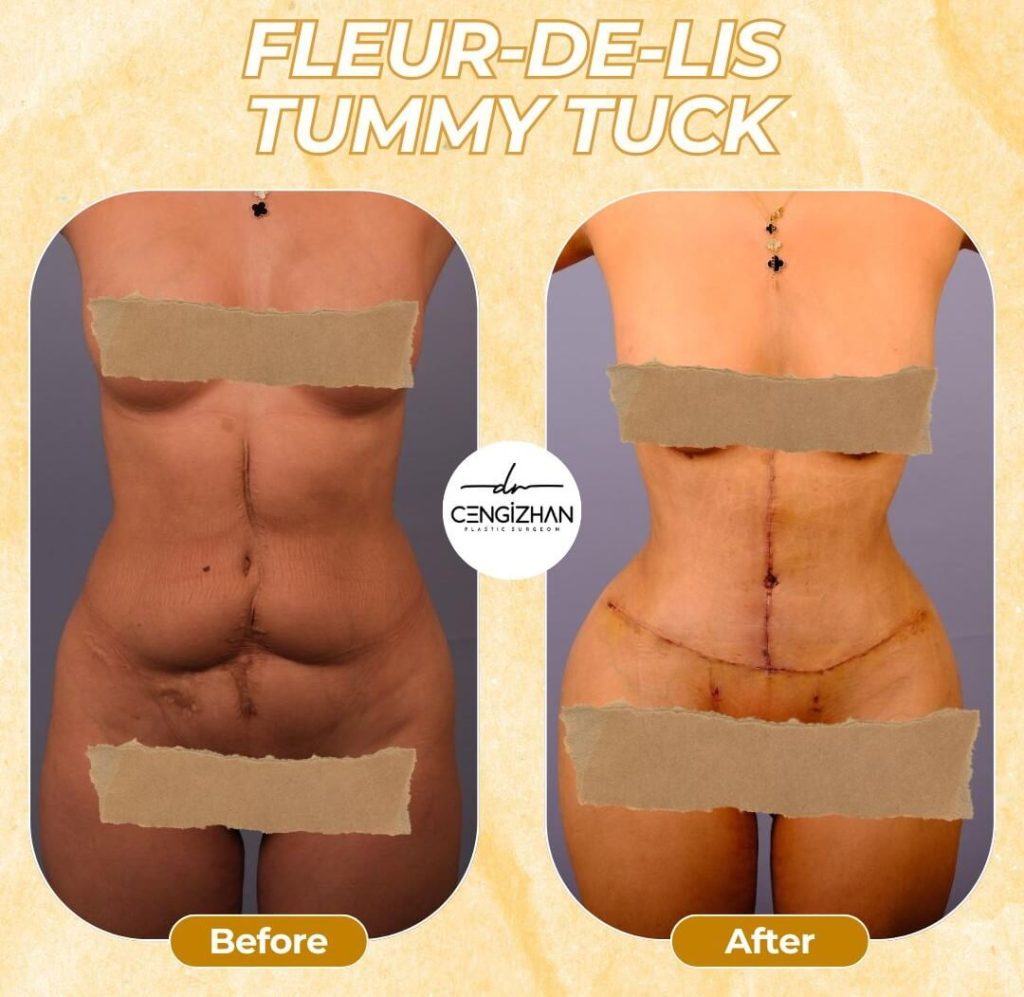
Example of a before & after testimonial of one of Dr. Cengizhan’s patients.
Tummy Tuck for Men
Mostly due to significant weight loss, men will have excess skin especially on their abdominal area. Abdominoplasty is a common cosmetic solution to achieve a more toned & defined upper body for men also.
A “male tummy tuck” is not so different from a standard tummy tuck, though. There are only some slight differences that may change the surgery process, which are:
-
- Muscle Focus→ Male tummy tucks often emphasize the rectus abdominis muscles to enhance the appearance of a toned, muscular abdomen, sometimes incorporating a six-pack definition.
-
- Incision Placement→ Incisions may be positioned to align with the natural contours of the male physique, often lower to be easily concealed by clothing.
-
- Fat Distribution→ Men typically have different fat distribution patterns, and the procedure may involve more targeted liposuction to address these areas.
-
- Skin Thickness→ Male skin is generally thicker and more fibrous, which can affect the surgical technique and recovery process.
-
- Combined Operations→ Since loose skin is often not limited to the abdominal area—affecting the breasts and other regions as well—procedures like may also be included as part of the overall treatment plan.
Since loose skin is often not limited to the abdominal area—affecting the breasts and other regions as well—procedures like gynecomastia surgery may also be included as part of the overall treatment plan. Gynecomastia is a medical condition providing male breast tissue enlargement due to hormonal imbalances, and gynecomastia surgery refers to the removal of those excess breast tissue, resulting in a flatter, more masculine chest.
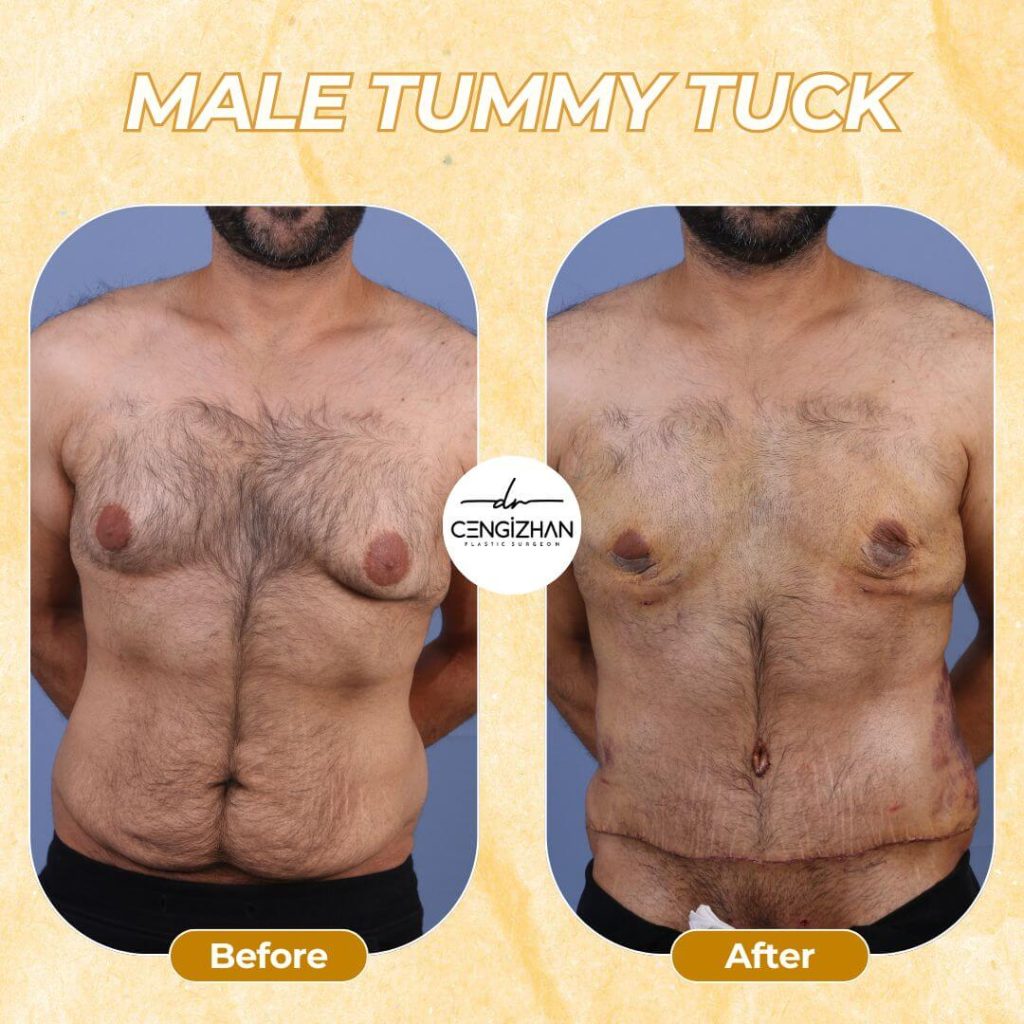
Example of a male tummy tuck before & after by Dr. Cengizhan.
The average cost of a tummy tuck for men does not differ significantly enough to warrant separate data. You can refer to the end of this article for general abdominoplasty pricing information.
Recovery from Abdominoplasty
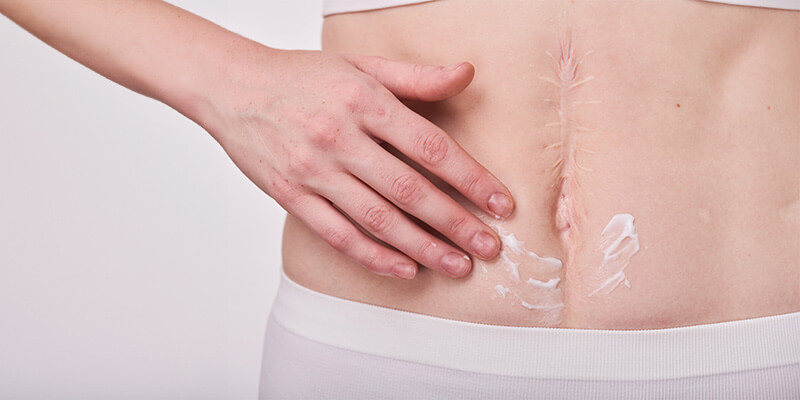
Healing from a tummy tuck involves several stages to ensure optimal recovery and results.
-
- Initially, a drain is placed to remove excess fluids, which is typically removed within 2 – 4 days.
-
- Patients are advised to wear a compression garment for 4-6 weeks post-surgery to support the healing tissues and reduce swelling.
-
- During the first 7-10 days, it’s crucial to bend at the waist while standing to protect the surgical wound, after which standing straight becomes more comfortable.
-
- The resulting scar will gradually fade over time with prescribed skin-care products, reaching its final appearance within six months to a year, and is usually concealed by underwear or a swimsuit.
FAQ
-
-
How long to wait before seeing the final result of tummy tuck?
-
While the initial results of a tummy tuck are often visible immediately after surgery, the full outcome becomes apparent within six months to a year as swelling decreases and the scar gradually fades.
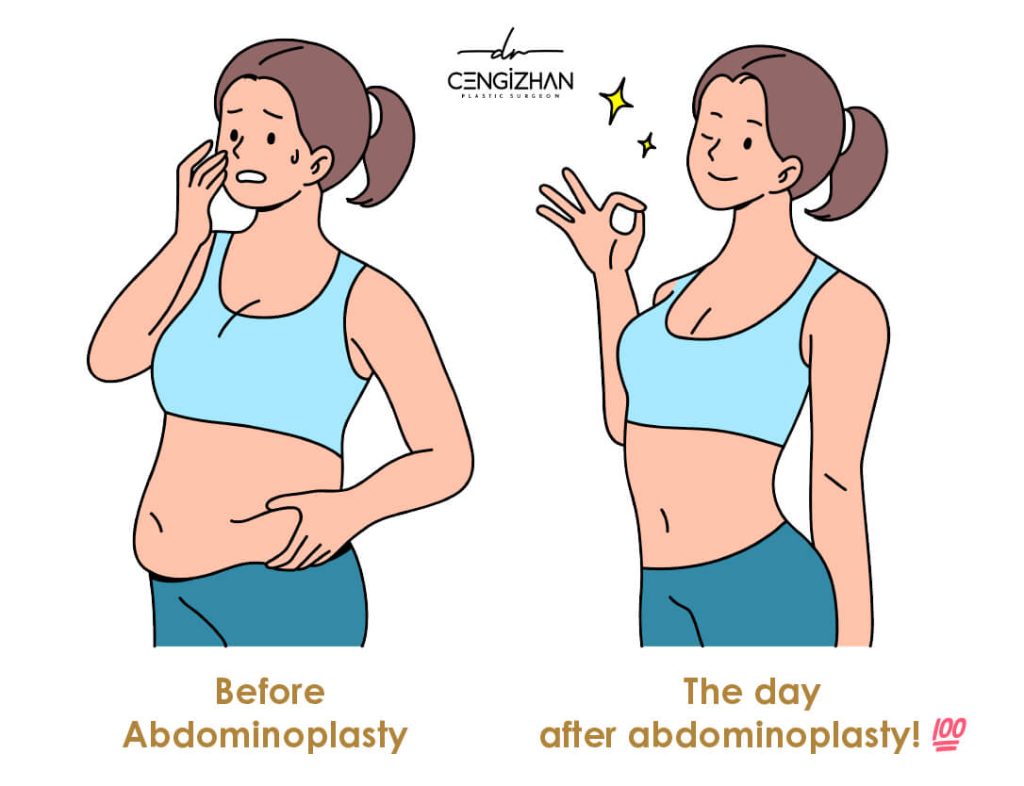
-
-
Is Turkey a safe country to get a tummy tuck?
-
Choosing Turkey for a tummy tuck with Dr. Cengizhan Ekizceli offers access to high-quality medical care and state-of-the-art facilities. Dr. Cengizhan’s expertise ensures great results, while Turkey’s well-established medical tourism infrastructure provides a smooth and supportive recovery experience.
-
-
Which surgeries can be combined with abdominoplasty?
-
Liposuction is a common surgery that can be combined with tummy tuck. This combination can enhance the overall contouring results by removing excess fat in addition to tightening the abdominal area.
-
-
Who are good candidates for a tummy tuck?
-
Good tummy tuck candidates have excess skin and weakened muscles in their stomach due to losing significant weight or giving birth. They should be at a stable weight & should not smoke. Age is not a limiting factor if they are in good health.
-
-
Is it possible to give birth after a tummy tuck?
-
Dr. Cengizhan Ekizceli recommends his patients to consider a tummy tuck after completing their family planning beforehand. This is because subsequent pregnancies can alter the results of the surgery, as giving birth often leads to the stretching and relaxation of the abdominal wall.
As to the question, yes! It is completely possible to give birth after a tummy tuck, but it is not advised due to optimal surgery results.
-
-
What is the cost of a tummy tuck?
-
Although varying factors such as patient individuality, surgeon’s experience & the extent of the said procedure makes it difficult to set a fixed price on abdominoplasty, the renowned U.S. database of plastic surgeries called RealSelf claims these are the common costs for a tummy tuck:
-
- Min. cost for a tummy tuck is $4.5K
-
- Max. cost for a tummy tuck is $20K
-
- Average cost for a tummy tuck is $8.2K
-
-
How long can a tummy tuck last? Is it permanent?
-
As long as you manage to keep your weight stable, the tummy tuck operation will last for a lifetime.
-
-
Does it hurt to eat after getting a tummy tuck?
-
Though many patients experience stiffness around the surgical site, a tummy tuck will not lead to stomach ache. You can continue your regular diet after the operation if you do not have already-existing gastric problems. Otherwise, try to eat bland or light foods until you feel okay again.
-
-
Who is NOT eligible for a tummy tuck?
-
If your Body Mass Index (BMI) is over 30 -considered overweight – you are not suitable for any of the abdominoplasty procedures.


